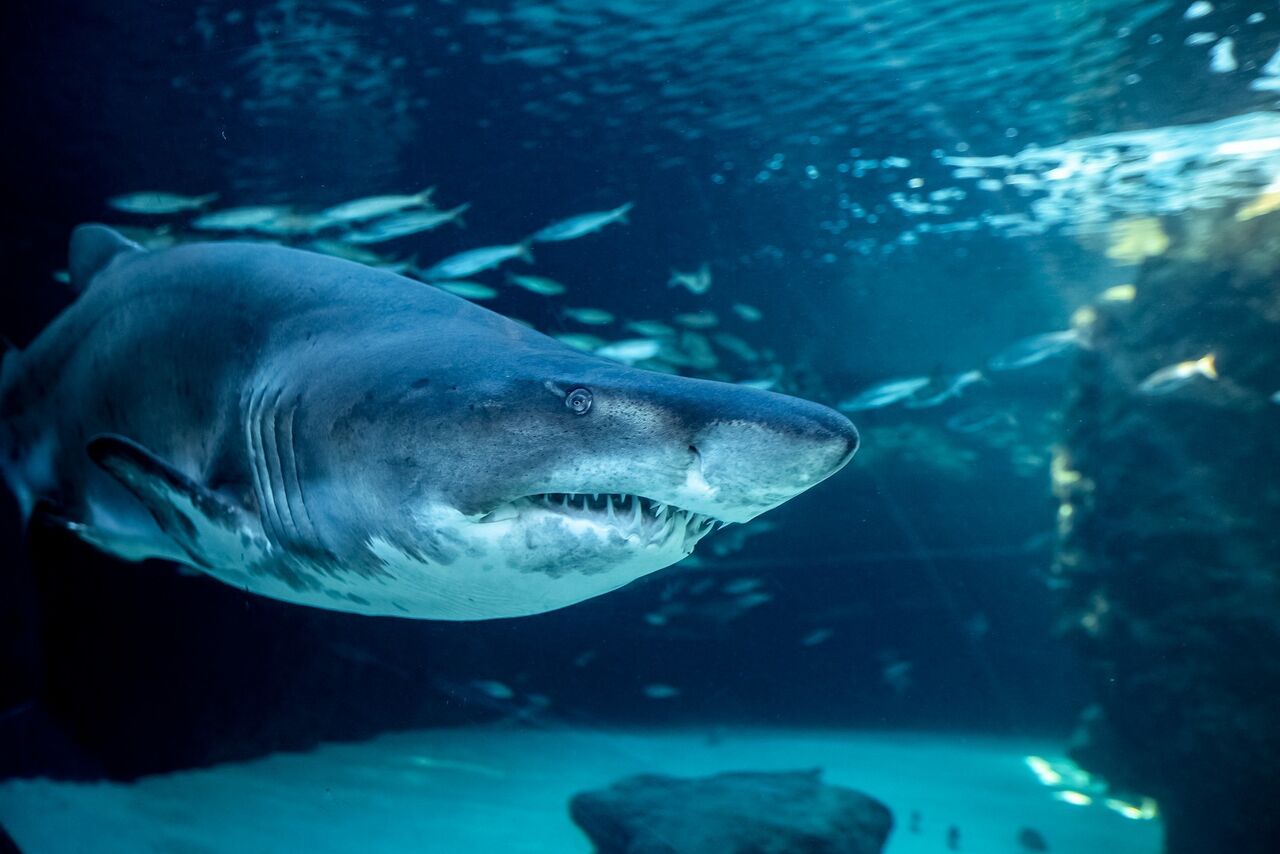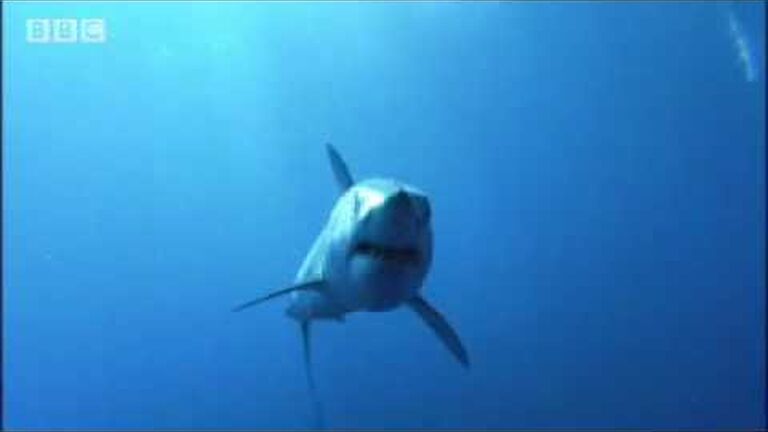Ragged-tooth sharks are one of the most iconic animals at the Two Oceans Aquarium, with thousands of people taking the opportunity to stop and stare in fascination at our Save Our Seas Foundation Shark Exhibit. But, how much do you really know about these incredible animals? Here are 10 facts about our beloved raggies:
1. They go by many (inappropriate) names
Here in South Africa, we all know and love our local ragged-tooth sharks, but did you know that they carry many different names? In the US they are best known as sand tiger sharks (even though they are neither sand sharks nor tiger sharks) and in Australia, they are known as grey nurse sharks (even though they are not grey sharks or nurse sharks). Even their binomial name is a bit of a misnomer - Carcharias taurus literally means "bull shark"... But they are not bull sharks!
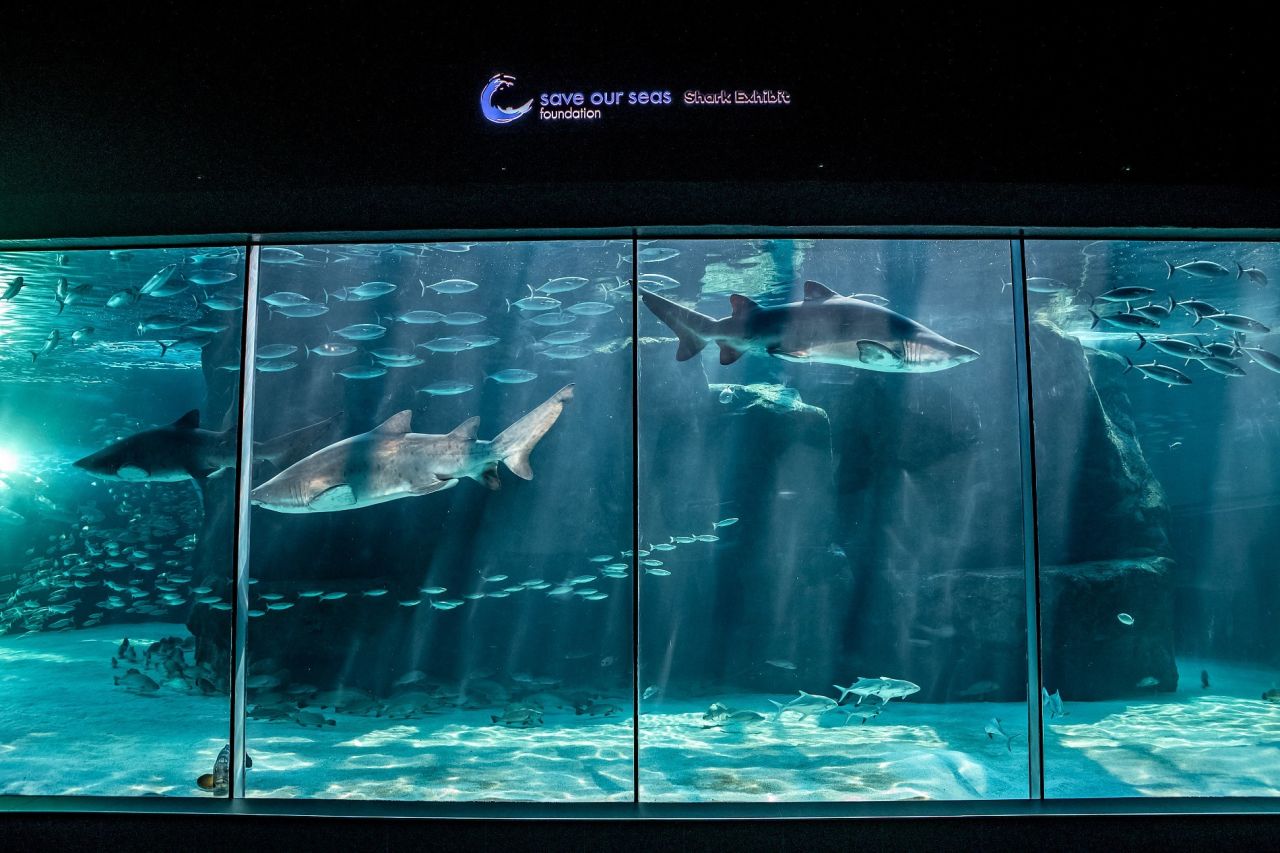
2. They are the only sharks that swallow air bubbles
Most fish use a gas-filled swim bladder to adjust their buoyancy so that they can more effortlessly maintain a certain level in the water column. Sharks usually do this differently, lowering their density by having lightweight cartilage skeletons and large oily livers. Ragged-tooth sharks are a unique outlier - they swim to the surface and swallow air bubbled to adjust their buoyancy. If they accidentally swallow too much air, they just burb it up!
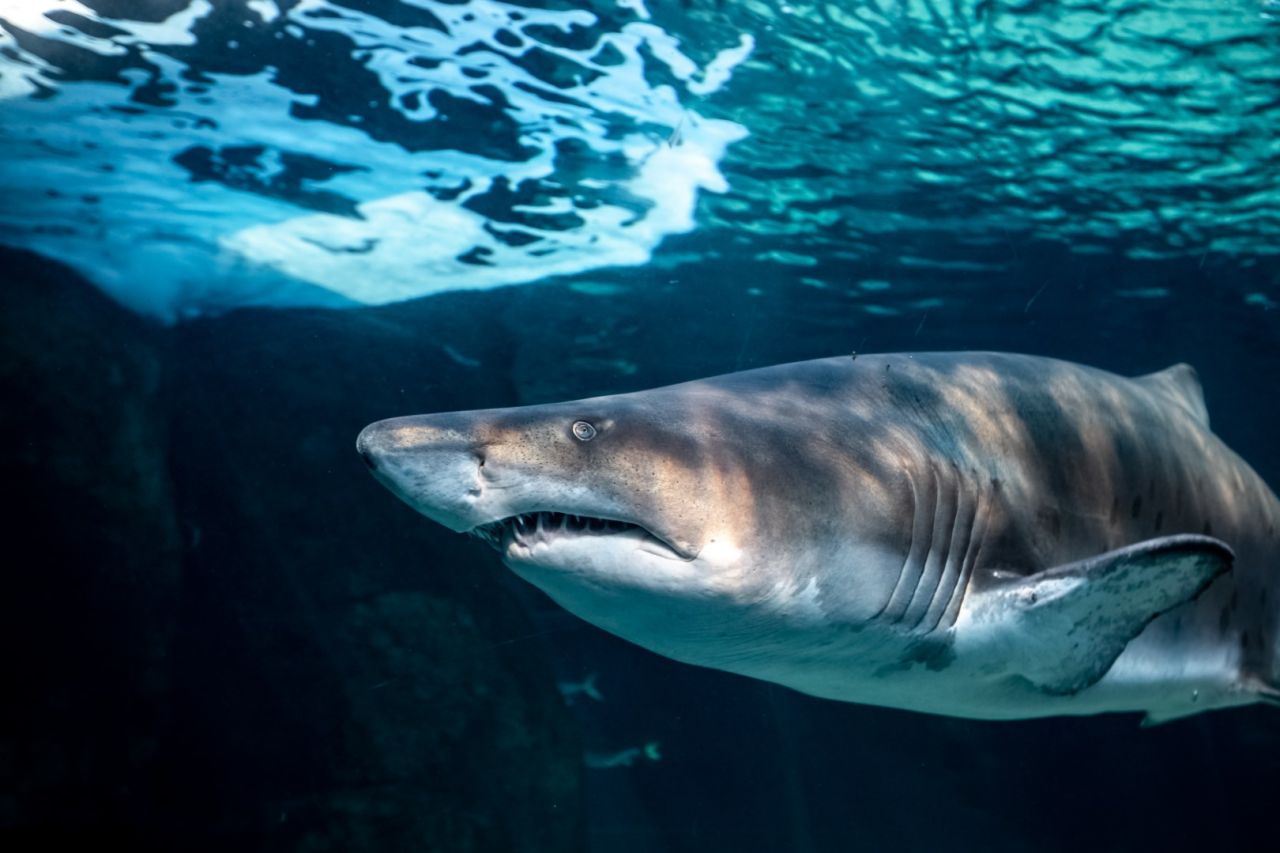
3. They give birth to live young
Ragged-tooth sharks are ovoviviparous, which means that they give birth to live pups, but unlike mammals, they do not have uteruses to provide nutrients. This means that the little shark embryos need to get their nutrients from somewhere else. The shark embryos feed on yolk from their egg, and will also eat all the other smaller embryos that they share a uterus with - something known as adelphophagy or intrauterine cannibalism - and will also be fed a steady supply of unfertilised eggs. The result of this is that the mother will be able to nurse her young to the very large size of about a metre before they are born - making baby ragged-tooth sharks very capable from the moment they are born, but this also means that there are very few of them and that reproduction is slow.
4. Their teeth are optimised for eating fish
Ragged-tooth sharks have pointy, needle-like teeth. These are good for gripping onto slippery fish, but are not very good at biting off pieces of food - that's why we see the sharks shaking their heads to try to reposition their food to be swallowed whole, or to break off smaller pieces. Their diet is comprised primarily of bony fish, skates and small sharks - with some regional variation.
5. They migrate
They might live relatively relaxed lifestyles, but ragged-tooth sharks are actually long-distance swimmers! Every year, South African ragged-tooth sharks migrate over 3 000km - coming to the cool waters of the Southern Cape to pup in winter, and then migrating to the warmer waters of Maputo Bay and KwaZulu-Natal for the summer to mate.
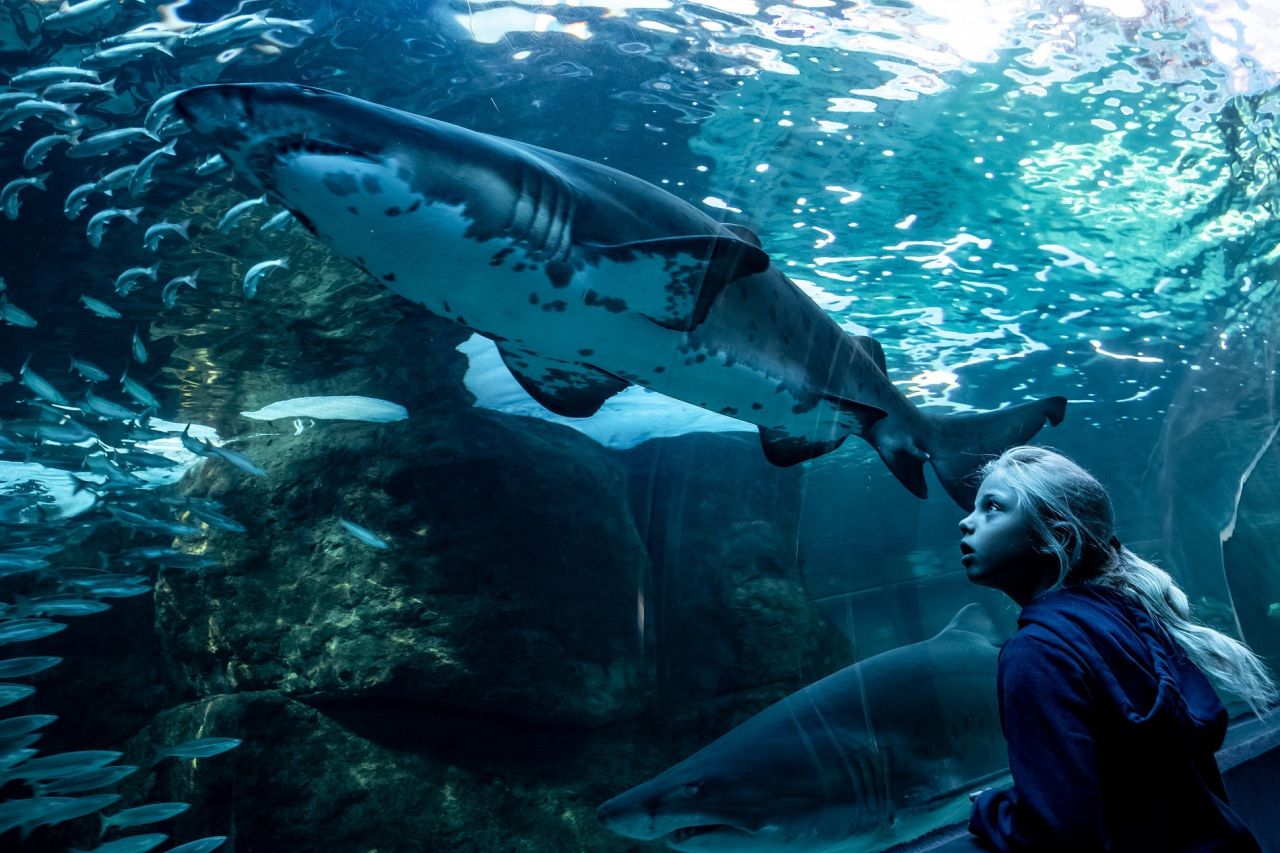
6. They are endangered
Ragged-tooth sharks are Critically Endangered (basically as poorly-off as a species and be before extinction). The reason for this is the same as we see in many animals - ragged-tooth sharks invest a lot in a small number of offspring, and this slow reproductive strategy has left them incredibly vulnerable to the human pressures of overfishing, habitat destruction and strangling in ghost nets.
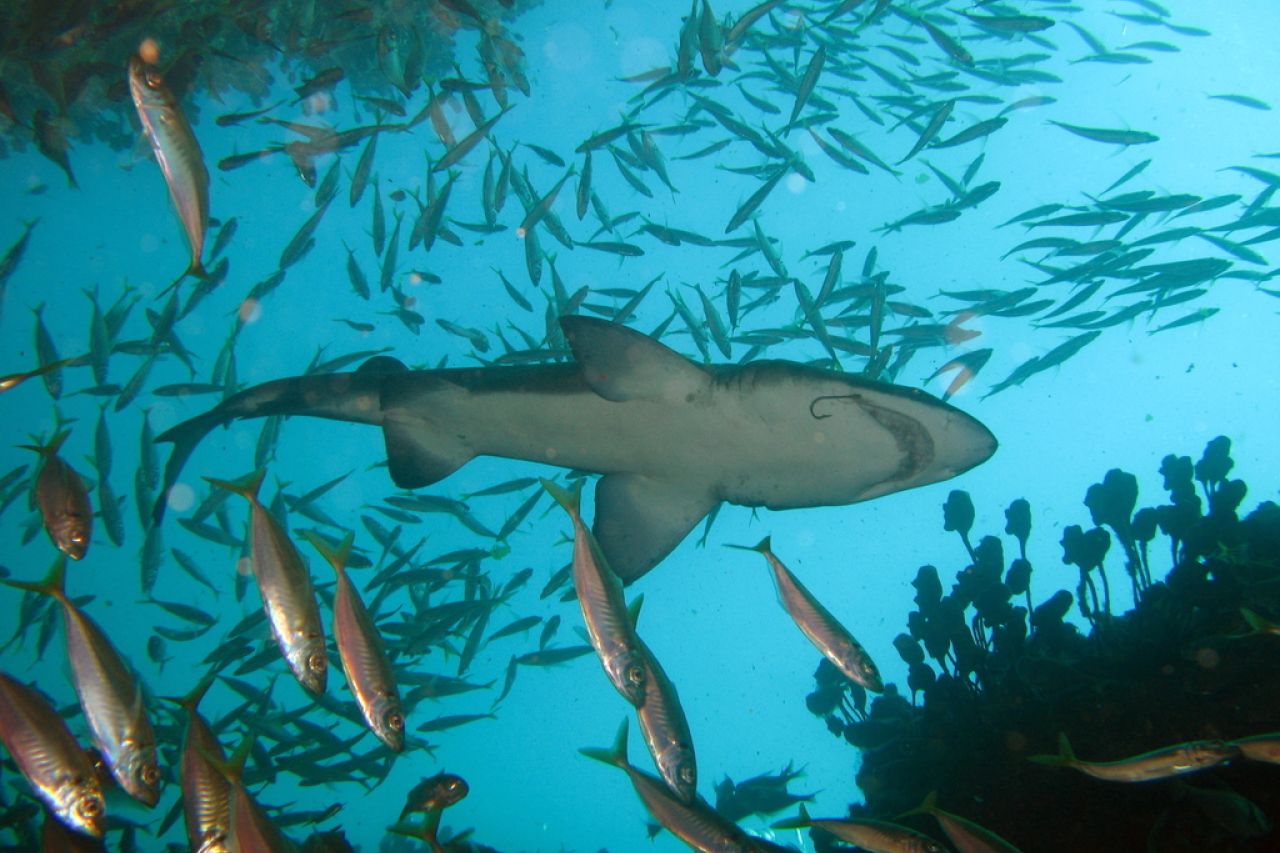
7. They are nocturnal
The slow movements and efficient buoyancy control of ragged-tooth sharks make them ideal stealthy hunters. During the day, they will hide in shallow, shadowy areas. At night they will leave their home shelter, and roam long distances, staying close to the seafloor. Their usual hunting behaviour is solitary, but in some parts of the world where large schools of fish are present, they have been known to coordinate hunting in groups.
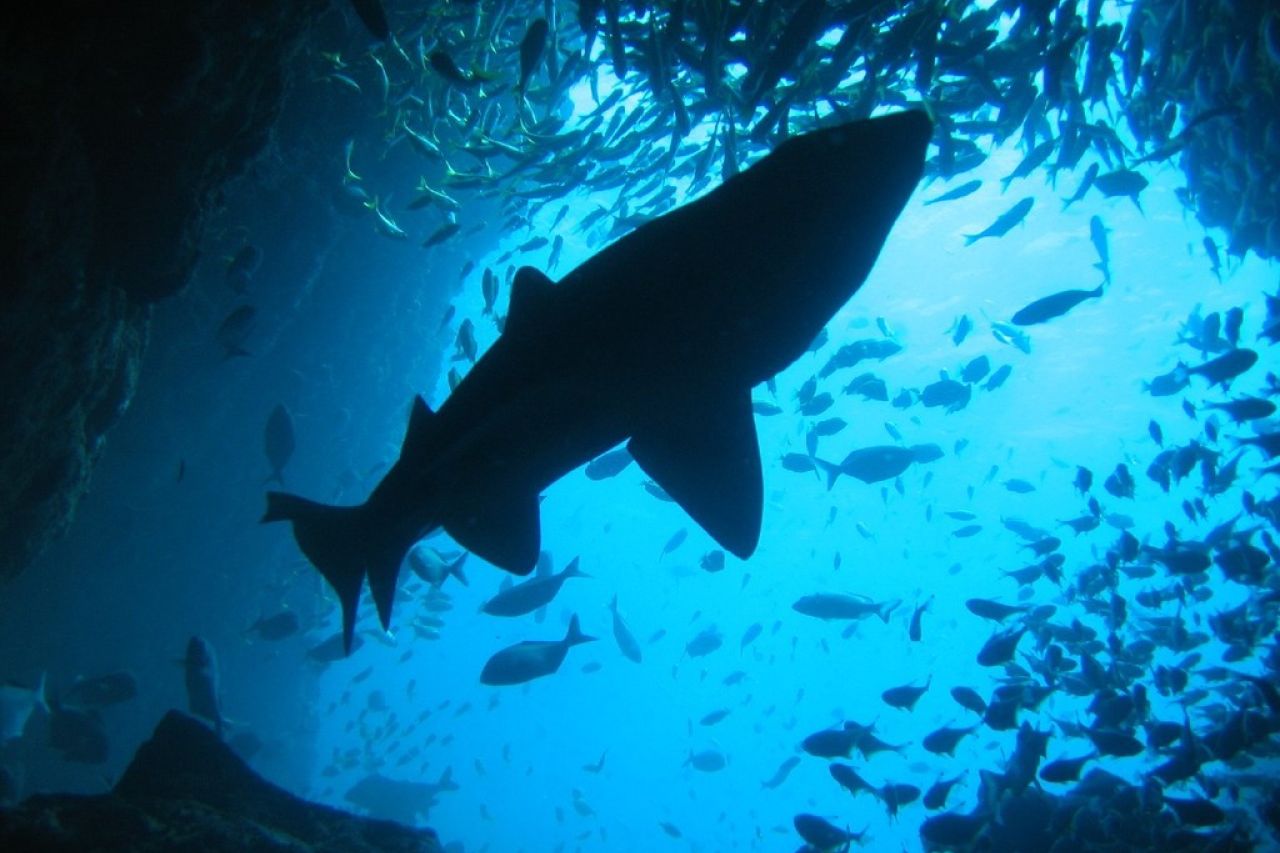
8. They are cosmopolitan
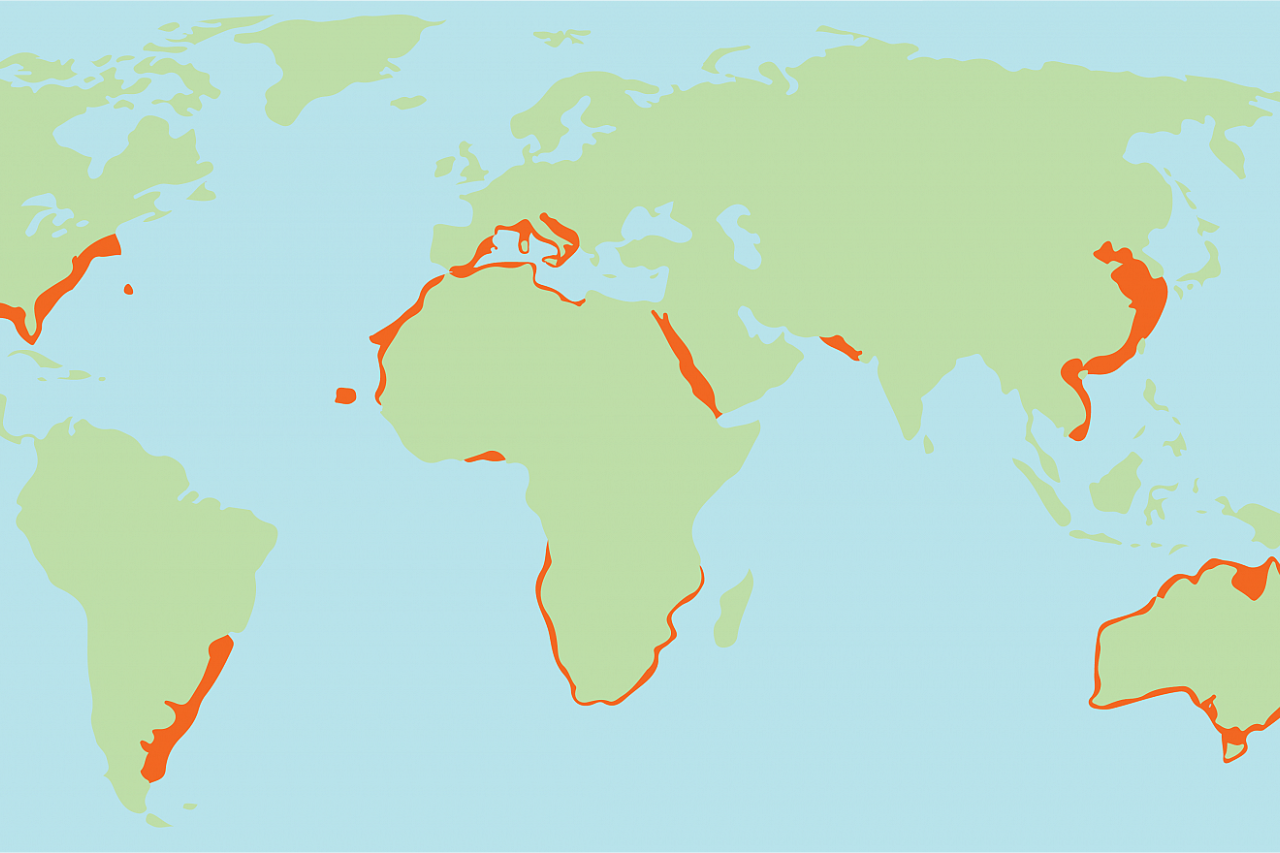
Ragged-tooth sharks inhabit sandy coastal areas, estuaries, tropical reefs and other warm and temperate waters around the world. Their many names are a testament to their wide range - Southern Africa, North Africa, the Mediterranean, the Eastern United States, Australia, the Red Sea, and Southeast Asia and Japan.
9. The live long
Ragged-tooth sharks grow to about 3.2m and can live for 30 years!
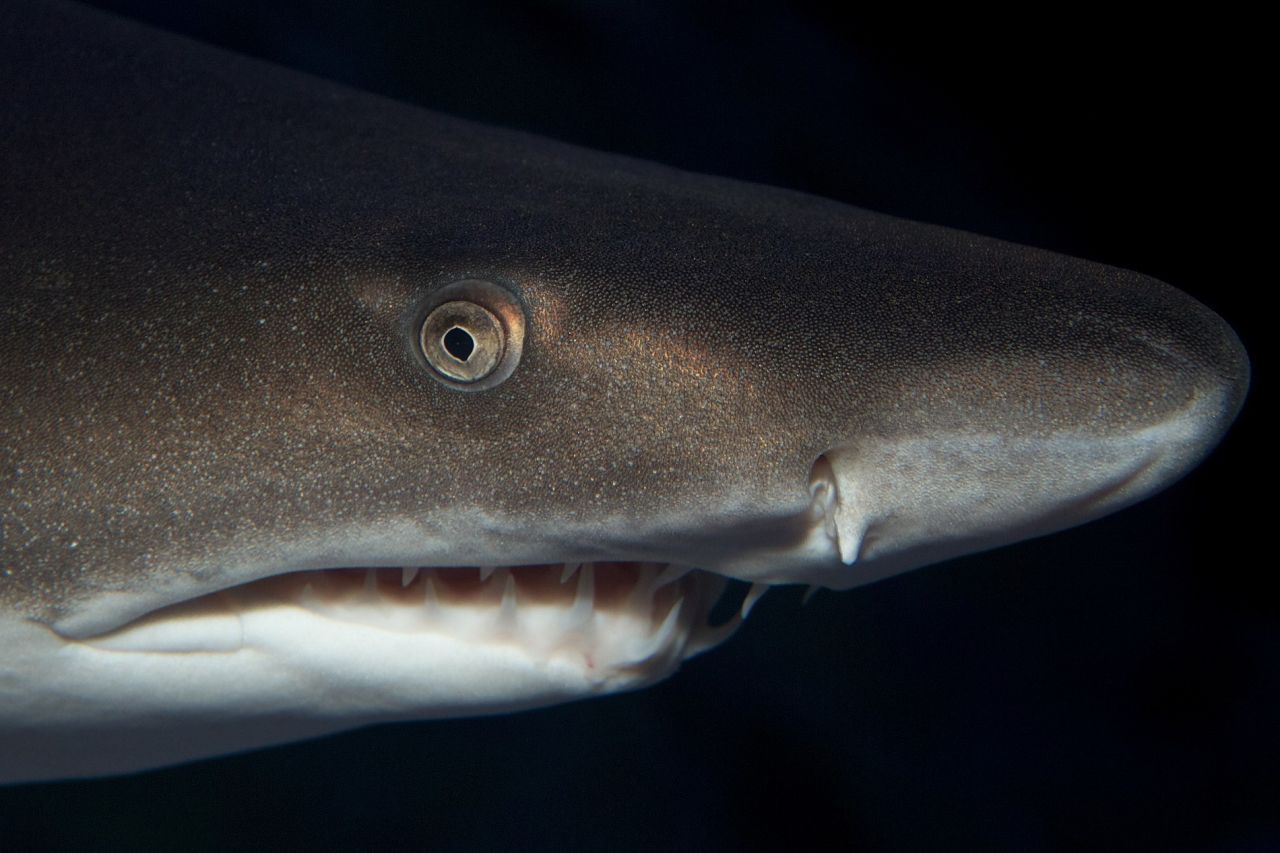
10. They are conservation science ambassadors
The ragged-tooth sharks that have been kept at the Two Oceans Aquarium in the past, as well as those currently in the Save Our Sea Foundation Shark Exhibit, are incredible ocean science ambassadors. Since 2004, when the Two Oceans Aquarium releases a shark, it is fitted with one of a number of tagging devices that allow it to be tracked and monitored - which has supported the work of many conservation science organisations. The Aquarium's ragged-tooth sharks have revealed their South African migration pattern, mentioned earlier, their preferred resting sites, and we've also been able to confirm that sharks kept at the Aquarium for short periods of time have been able to return to their normal, natural behaviours once they return to the wild. Plus - we like to think that a generation of fascinated children will grow up to become future ocean scientists!
What's next? How about scuba diving with the ragged-tooth sharks at the Aquarium?
Related News
Sign up to our Newsletter
Receive monthly news, online courses and conservation programmes.
